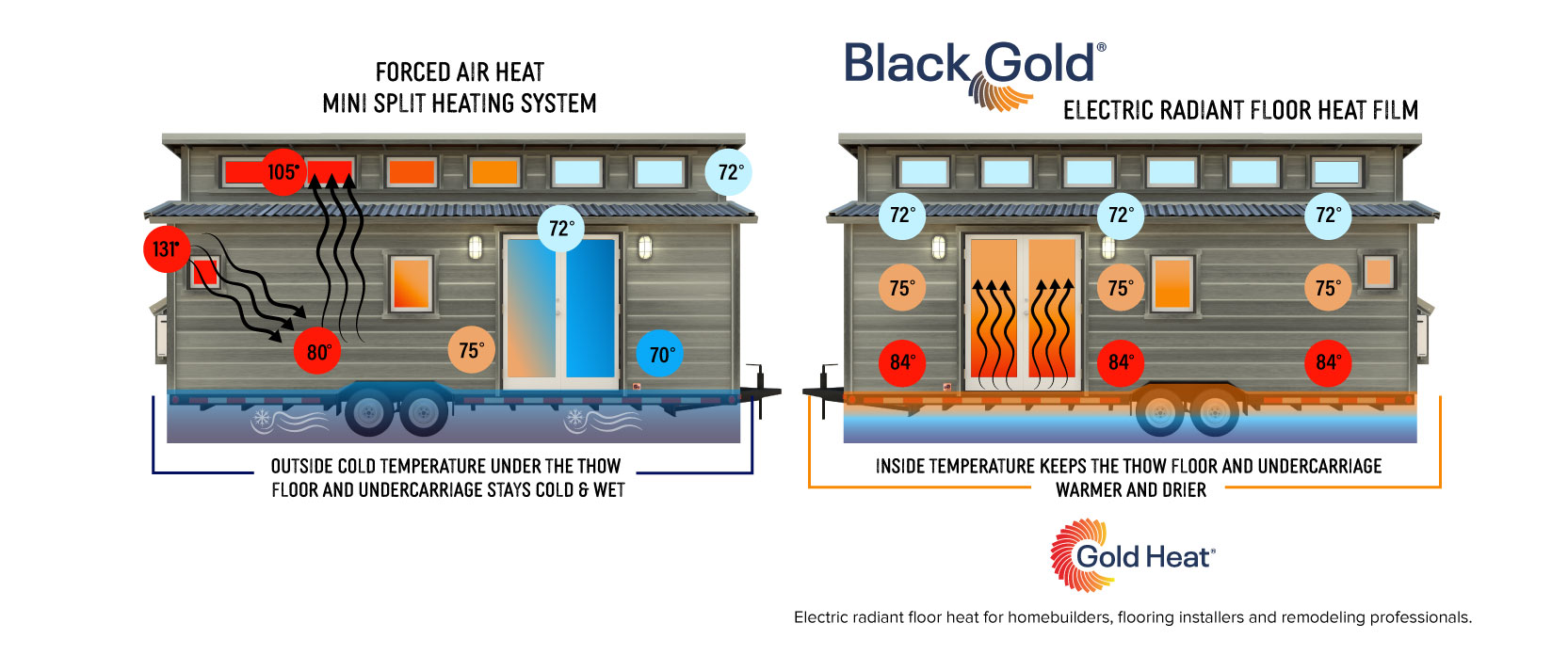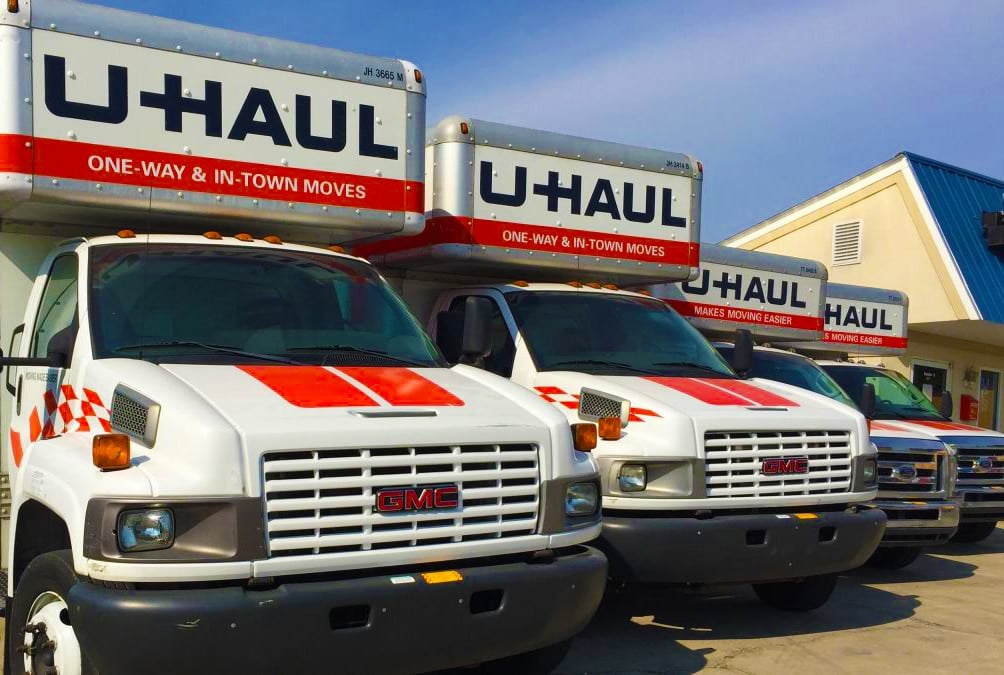Guest Blogger: Ryan Mitchell @ The Tiny Life
The big decision: moving a tiny house
When I decided to move my tiny house, there was a lot to learn. First, let me say that towing a tiny house is slightly (or maybe not-so-slightly) terrifying. It’s a big undertaking, and you’re not only moving a big load, but you’re moving your actual HOME.
However, towing a tiny house is no easy job, even for someone who’s experienced. Most tiny house owners either buy a home that needs to be moved to their land or build a tiny house that needs to be moved around the property.
Unless you’re building your tiny home from the ground up on its foundation, you’ll definitely need to move it at least once—more if circumstances change.
Towing a tiny house is pretty nerve-wracking, but with the right truck to tow your tiny home, you can have one less thing to worry about. It’s something that a lot of people don’t think about until after they build their own tiny house.
More importantly, know how often you plan to move and how much your house—and everything in it—weighs before making any decisions. Not every truck is suited to tow this much weight, either, so you must have the right truck for towing a tiny house. After moving the house this last time, I must admit there are a few things I will do differently if there’s a next time.
If you need to move or tow a tiny house, here’s what you need to know.
Understanding truck towing capacity
If you’re towing a tiny house, you need a vehicle that can handle the job. To put it simply, truck towing capacity is how much weight your vehicle can pull—and it can be tricky to figure out. You must account for all the weight, including the trailer, the payload in your truck bed, and even passenger weight if you’re running close to your truck’s limits. You can calculate the weight of your tiny house here.
Once you have determined the weight of your tiny house, contents, cargo, trailer, and passengers, you’ll need to find out what trucks are capable of pulling it all.
Truck towing capacity
In 2015, all the major truck manufacturers—Ford, GM, Toyota, Chevy, and Nissan—adopted a uniform testing and rating method to determine towing capacity. This made it much easier for me when I started looking for the best truck for towing a tiny house.
However, the maximum towing capacity you find in brochures or on the manufacturer’s website isn’t always accurate. Your truck may have features that reduce towing capacity, so you need to check the sticker on the driver’s side door jamb for the towing capacity for that specific build. When in doubt, make some calls, visit a dealership, or consult with an expert to avoid a mistake that may damage your vehicle AND your home.
Towing capacity is determined by two numbers, the Gross Vehicle Weight Rating (GVWR) and the Gross Combination Weight Rating (GCWR). I’ll explain these two numbers below, but you should understand them before towing your tiny house.
Gross Vehicle Weight Rating (GVWR)
The GVWR is the maximum amount your truck can weigh fully loaded and full of fuel, including the trailer’s tongue weight, tiny house, passengers, and cargo.
The “tongue weight” of a tow trailer is usually 10-15% of the combined weight of the trailer, tiny house, and contents. Tongue weight varies based on trailer design and weight distribution. It doesn’t refer to the trailer’s weight but rather to the downward force the trailer exerts on the hitch.
Also, trailers also have a GVWR. You’ll need to make sure your trailer can handle your tiny house weight as well. In most cases, you’ve likely done this calculation before (but if you need help selecting a trailer, please explore my post on Tiny House Trailers).
Tiny house vehicle weight
Gross Combination Weight Rating (GCWR)
Gross Combination Weight Rating
The Gross Combination Weight Rating (or GCWR) is the maximum weight of the truck, trailer, tiny house, plus the passengers and cargo. Don’t forget to factor in the weight of the fuel.
Here’s how to determine your truck’s towing capacity:
- Start with your truck’s curb weight. That’s the weight of the truck by itself, with no fuel or cargo. Check the owner’s manual or the sticker.
- Add the weight of passengers, fuel, trailer, tiny house, and its contents, plus any cargo in the truck’s bed. Don’t forget add-ons like a camper shell or roof rack and whatever is strapped to that.
- Subtract the total from the GCWR to make sure you’re under the towing capacity.
Truck gross combination weight rating
On the whole, I would recommend making sure you’ve got some wiggle room too. You want to be hundreds of pounds underweight (not within a narrow margin) just in case your calculations are off. If you need to off-load weight, consider what you can remove from the house, the vehicle, and the trailer. Being conservative with your estimate will give you some peace of mind once you start moving.

The Best Trucks For Towing A Tiny House
Towing a tiny house requires a lot of power, and the truck’s configuration matters. The size of the engine, type of gear, cab style, length of the truck and bed, number of axles, towing package, and some luxury features will all impact the towing capacity.
Therefore, tiny houses and their contents can vary hugely in weight depending on the size and materials used. I’ve seen simple 10-foot tiny houses that weigh in at 3,200 pounds and 34-footers weighing 14,000 pounds and up.
Because tiny homes are so heavy, and you might replace or add items in the future that add weight, it’s better to have more truck than you need. With that in mind, here are the best trucks for towing tiny houses.
Large Trucks
The Ford F-150 or a Dodge Ram 1500 are the best in class, so it’s no wonder they’re two of the most popular trucks on the market. But even with these “big truck” options, your tiny house towing capacity is limited, and you’ll have to keep close track of everything you add to your tiny house load. These trucks range in towing capacity from 9,740 to 13,200 pounds.
This “large truck class” includes:
Nissan Titan
Toyota Tundra
Chevrolet Silverado 1500
GMC Sierra 1500
Ram 1500
Ford F-150
Toyota Tundra
Heavy-Duty Trucks
With a heavy-duty truck, you can tow a much larger tiny house. The towing capacity of heavy-duty trucks ranges from 12,760 to 18,500 pounds. This class of truck gets the job done and still offers a cushy ride.
These heavy-duty trucks include:
Nissan Titan XD
Ram 2500
GMC Sierra 2500HD
Chevrolet Silverado 2500HD
Ford Super Duty F-250
dodge ram 2500
Ultra-Duty Trucks
Ultra-Duty Trucks for towing a tiny house
If you’ve got a larger tiny house filled with furniture and appliances, or if you think you’ll be moving your tiny house often, an ultra-duty truck might be worth the extra money.
These trucks are especially useful if you’re crossing mountains or off-roading in rough terrain out in the wilderness. Bear in mind that these trucks can cost more at the gas pump. More power means more fuel—a lot more fuel.
This Ultra-Duty (or Super-Duty) class of trucks include:
GMC Sierra 3500HD
Chevrolet Silverado 3500HD
Ram 3500
Ford Super Duty F-450
ford f450 super duty
Of these, the Ford Super Duty F-450 has best-in-class towing power, up to 37,000 pounds. It comes with standard dual rear wheels, five seats, and an extended-length cargo bed. The Ford Super Duty is a commercial truck, meaning it’s built for hauling the heaviest loads.
However, the Chevy Silverado 3500HD is less expensive, with almost the same capacity. Yes, the Chevy has less sophisticated features but pulls nearly as much weight, up to 36,000 pounds. If you’re looking at a truck to tow a tiny house, either one of these (or any truck in the Ultra Duty category) will get the job done.
I’d also like to answer one more question people ask me:
Can a Jeep tow a tiny house?
Sadly, no.
Even a Jeep Grand Cherokee only has between 3,500 and 7,200 pounds of towing power. You’d need the tiniest of tiny houses mounted on a fairly lightweight trailer. So as fun as it can be to have a Jeep for camping or off-roading, I wouldn’t recommend buying a Jeep for use as a tiny house truck. You could, however, use a Jeep to tow a teardrop trailer or a small camping pop-up,
Rent, Buy, Or Hire A Truck To Tow Your Tiny House?
If you need to tow your tiny house, what’s the best method for getting the job done? Should you rent a truck? Should you go out and buy one of the heavy-duty trucks above? Should you hire someone out to take care of the move for you?
This is what I recommend:
Using a rental truck to tow a tiny house is the best way to answer this question is to ask another: Is this a one-time move?
If yes, then I suggested hiring professionals to tow your tiny house. Like I said before, towing your tiny house is nerve-wracking, and professionals know how to tow a tiny house and have the equipment to get the job done without incident.
On the upside, the other benefit of hiring someone to tow your tiny house is that professional towing companies also have the right insurance if something goes wrong.
It’s also tough to find a suitable rental with a towing package, especially for a one-way trip if you try to DIY. Hiring professionals typically costs $1 – $2 per mile, and it’s worth every penny.
Furthermore, if you plan to move frequently, or if you’re clearing land and working on setting up a homestead, your best bet is to buy the most powerful truck you can afford. After towing my tiny house 1500 miles, I advise purchasing a dually—a truck with double back tires—for added stability and control.
Legal Requirements for Towing a Tiny House
There are two kinds of tiny houses.
Tiny houses on wheels (THOWs) intended for nomadic use are generally smaller and lighter than homes built on a foundation. If you have a THOW, you probably know that you need to register in most states like any RV.
However, if you’ve never taken your tiny house on the road before, then it’s essential to know that, like any vehicle on the road, your tiny house must be registered and have a license plate when mounted on the trailer.
You have to get your trailer inspected and renew the tags every year (and pay taxes annually) in some states. In others, like NC, where I live, you can pay taxes upfront and not have to worry about it.
What I Learned: Things You Should Know Before Towing A Tiny House
From my tiny house towing experience, I definitely learned a few valuable lessons. If you need to move your tiny house, here are the things you should consider before you prepare for towing.
CONSIDERATIONS BEFORE YOU TOW A TINY HOUSE!
If you plan to move your tiny house often, avoid asphalt shingles and vinyl siding. It will all blow off.
For guidance, check the Florida building code. It’s centered around hurricane wind speeds.
Enlist friends and family to help. When I pulled my tiny house, I had a spotter on the passenger side to ensure I had no blind spots and a follow car to prevent tailgaters.
Plan your route carefully, with the fewest number of turns, least traffic, slower speed roads, and no bridges if possible.
Time your trip to avoid rush hour traffic. You do not want to navigate downtown Atlanta at 5 PM, pulling a tiny house!
Towing a tiny house uses a ton of gas. Don’t expect to get more than 5 MPG.

It only seems logical that Gold Heat would get in the floor heat game for a tiny house on wheels. Gold Heat has been serving the RV marketplace for almost 20 years. Gold Heat was the first kind of floor heat mat designed to be pre-terminated and ready to install right out of the box.
That’s why luxury motorcoach manufacturers insist on installing Gold Heat underfloor heat in their luxury coaches.
Not only that…
Gold Heat is respected for its high-quality manufacturing of electric radiant floor heat mats for any vehicle that moves.






